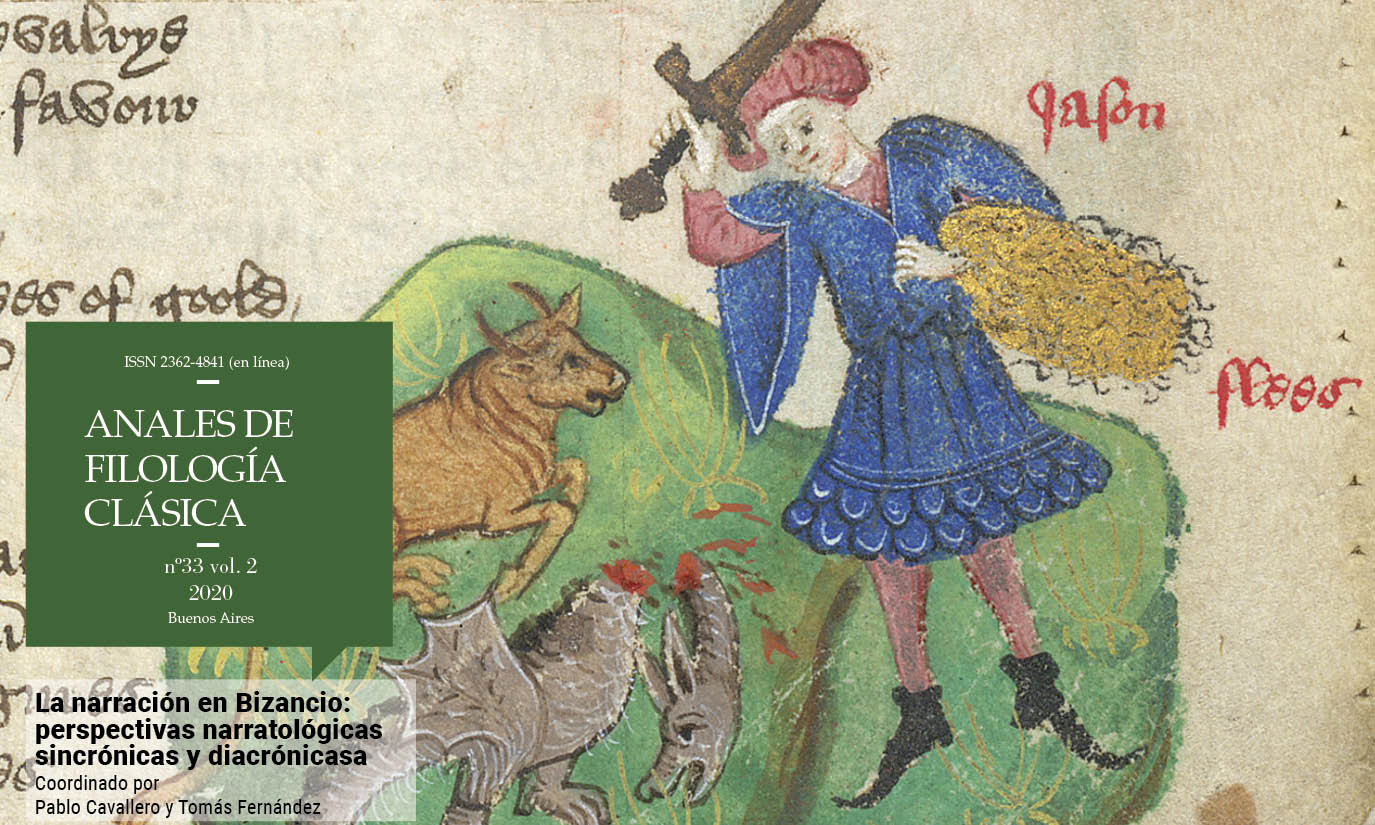Narrative characteristics of Andronicus and Athanasia (BHG 123 j)
Keywords:
narration, hagiography, Andronicus, Athanasia
Abstract
It is made here a narratological study of the version 123j that is included in the manuscript Matritensis BNE 4787 (with partial testimony of the mss. Sinaiticus 530 and Marcianus II 151). They are pointed out some aspects linked with the narrative structure, the actants/ opponents/ assistants, the time, the space, the narrator, the narratee. With these structural elements, of actors, of events, of time and of space, the narrator constructs a fable where the story of Andronicus and Athanasia departs from a ‘possibility’ (what holiness way to a ‘result’ (the concreteness of the holiness process), made evident by the miracles and awards achieved already in their lives. The resultant text appears as an entertainment subject and, at the same time, as a subject of moral and spiritual building, and as a hidden ‘propaganda’ of the thaumaturgic places; in order to achieve all that, the narrative characteristics are essential. must be followed?), it develops its ‘fulfilment’ (the eremitic life) and arrivesDownloads
Download data is not yet available.
Published
2020-11-30
How to Cite
Cavallero, P. (2020). Narrative characteristics of Andronicus and Athanasia (BHG 123 j). Anales De Filología Clásica, 2(33), 31-41. https://doi.org/10.34096/afc.i33.10013
Issue
Section
Artículos
Los autores/as que publiquen en esta revista aceptan las siguientes condiciones:
- Los autores/as conservan los derechos de autor y ceden a la revista el derecho de la primera publicación, con el trabajo registrado con la licencia de Atribución-CompartirIgual 4.0 Internacional (CC-BY-SA 4.0) de Creative Commons, que permite el uso comercial de la obra y de las posibles obras derivadas, la distribución de las cuales se debe hacer con una licencia igual a la que regula la obra original.
- Los autores/as pueden realizar otros acuerdos contractuales independientes y adicionales para la distribución no exclusiva de la versión del artículo publicado en esta revista (p. ej., incluirlo en un repositorio institucional o publicarlo en un libro) siempre que indiquen claramente que el trabajo se publicó por primera vez en esta revista.
- Se permite y recomienda a los autores/as a publicar su trabajo en Internet (por ejemplo en páginas institucionales o personales) antes y durante el proceso de revisión y publicación, ya que puede conducir a intercambios productivos y a una mayor y más rápida difusión del trabajo publicado (vea The Effect of Open Access).
En ningún momento se cobrará monto alguno al autor por la publicación en esta revista.







